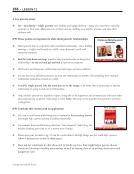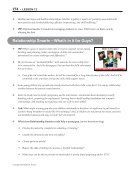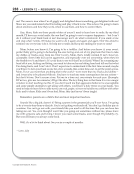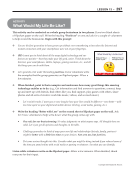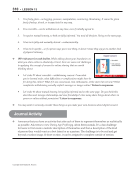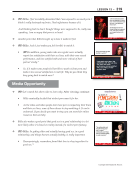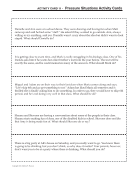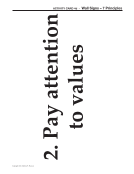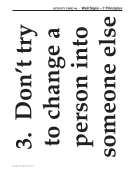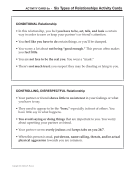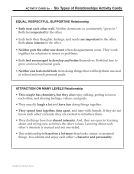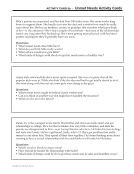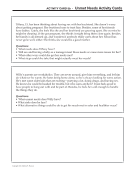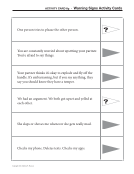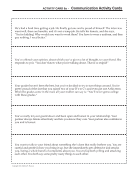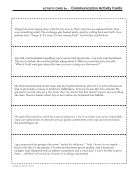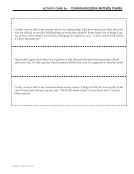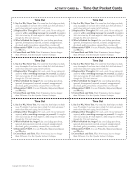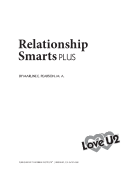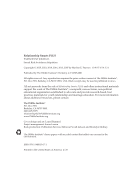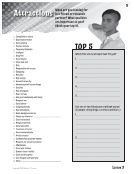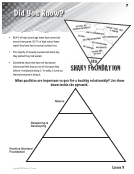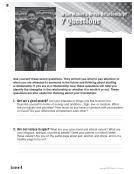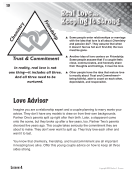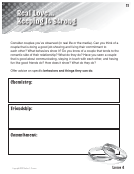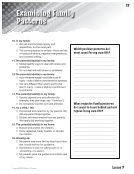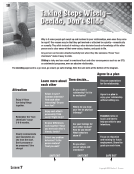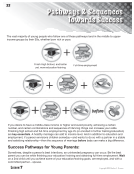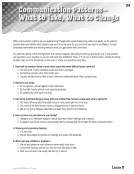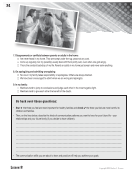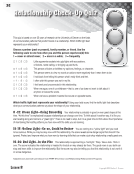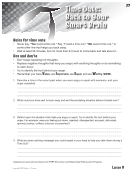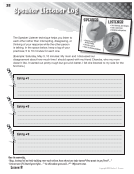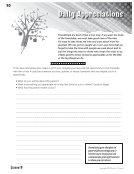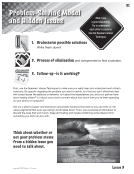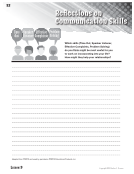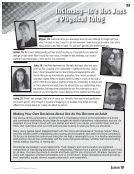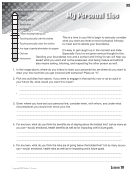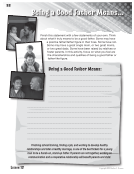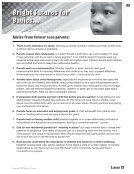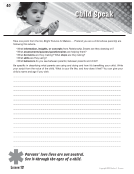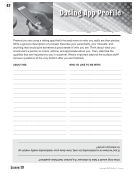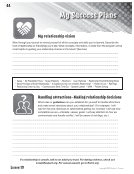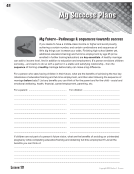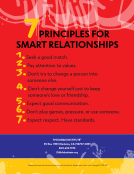Copyright 2025 Marline E. Pearson
110 • LESSON 6
(PP) Journal: Turn to pg. 14 of your journal, and let’s do a quick collective
review. Let’s recall as many examples of disrespect and early warning signs as
you can. Jot them down.
❖ Then take one example and ask the whole group to describe what
a person could safely do or say in such a situation to draw the line
of respect.
❖ Focus on being calm, assertive, and effective, so the person really hears you. What could be said to show the
person you expect respect and have a bottom line for how you expect to be treated or spoken to?
After listening to their responses, ask them to focus on pg. 15 of their journal. Also, remind them of a
final key point: A victim, no matter what, is never to blame for the actions of a perpetrator.
6.6 Sex Trafficking—
Prevention
Introduce this section with these points:
❖ (PP) Sex trafficking is the use of trickery, false promises, manipulation, and
coercion to make a person perform sex acts that the trafficker profits from.
❖ Anyone can be a victim. It’s not just females who are trafficked. It happens
to males. It can happen to anyone.
❖ Most sex trafficking in the U.S. is not done by strangers kidnapping a youth.
❖ Mostly, the trafficker is a person the victim knows or has come to know and trusts—someone in the
community, a family member, a friend’s parent or relative, or someone they meet online. Traffickers also
use other young people to befriend and recruit their victims.
Activity
Review and Practice
5 minutes
Realities of Sex Trafficking
110 • LESSON 6
(PP) Journal: Turn to pg. 14 of your journal, and let’s do a quick collective
review. Let’s recall as many examples of disrespect and early warning signs as
you can. Jot them down.
❖ Then take one example and ask the whole group to describe what
a person could safely do or say in such a situation to draw the line
of respect.
❖ Focus on being calm, assertive, and effective, so the person really hears you. What could be said to show the
person you expect respect and have a bottom line for how you expect to be treated or spoken to?
After listening to their responses, ask them to focus on pg. 15 of their journal. Also, remind them of a
final key point: A victim, no matter what, is never to blame for the actions of a perpetrator.
6.6 Sex Trafficking—
Prevention
Introduce this section with these points:
❖ (PP) Sex trafficking is the use of trickery, false promises, manipulation, and
coercion to make a person perform sex acts that the trafficker profits from.
❖ Anyone can be a victim. It’s not just females who are trafficked. It happens
to males. It can happen to anyone.
❖ Most sex trafficking in the U.S. is not done by strangers kidnapping a youth.
❖ Mostly, the trafficker is a person the victim knows or has come to know and trusts—someone in the
community, a family member, a friend’s parent or relative, or someone they meet online. Traffickers also
use other young people to befriend and recruit their victims.
Activity
Review and Practice
5 minutes
Realities of Sex Trafficking
























































































































































































































































































